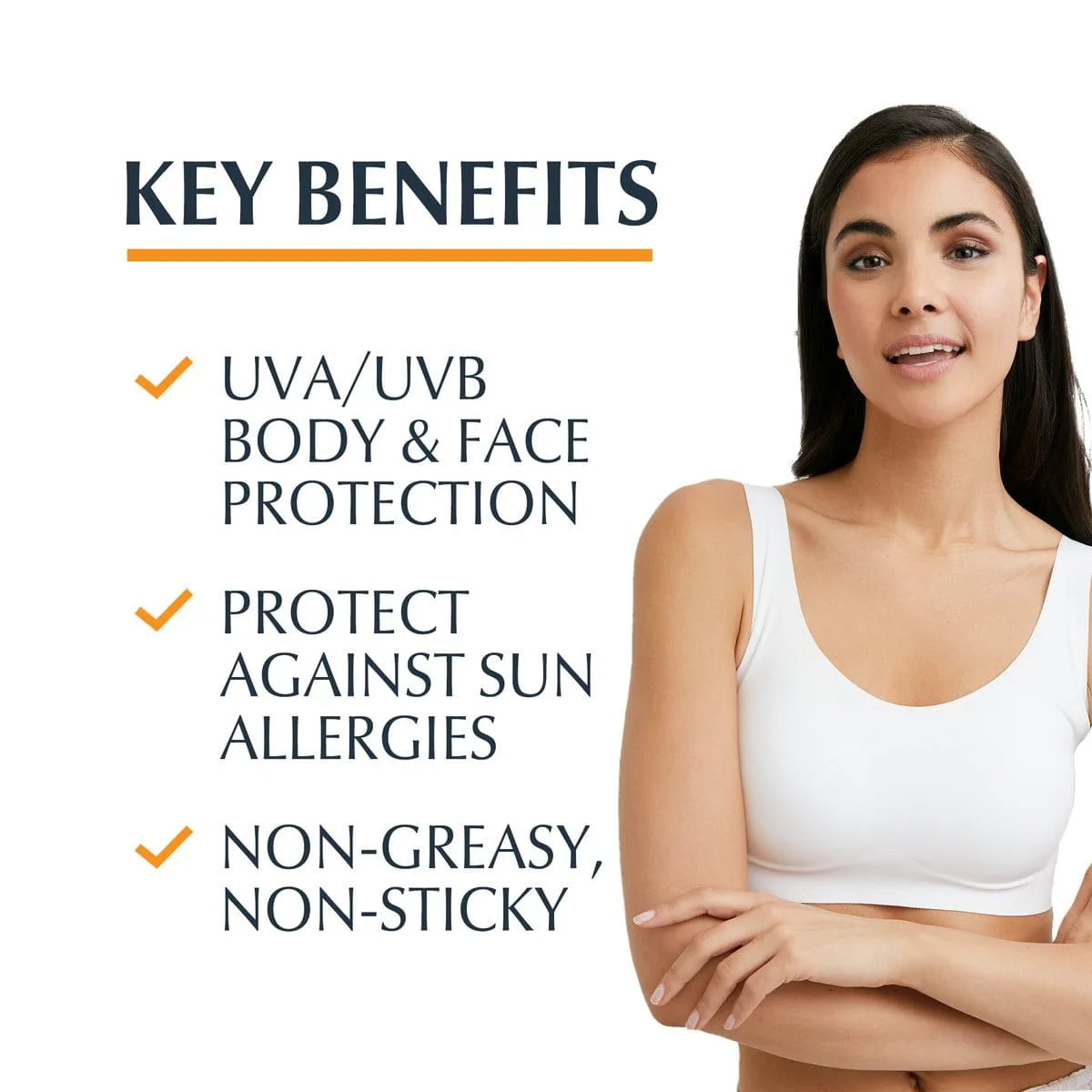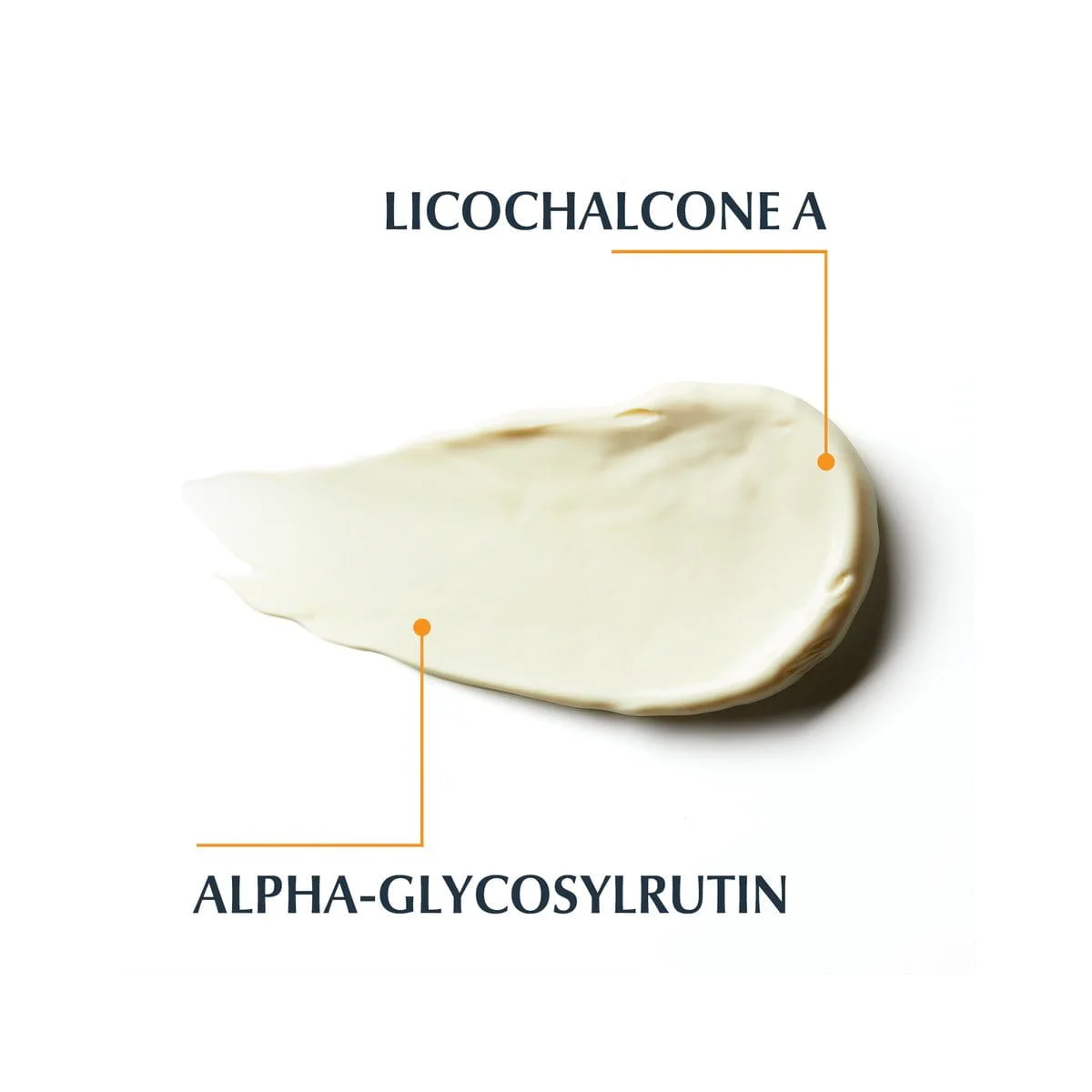We take responsibility. For your skin. And our planet.




We take responsibility. For your skin. And our planet.
Main Findings
What are the symptoms of sun allergy?
Sun allergies are very common, especially among young women and people with fair skin. The most common form of sun allergy is Polymorphus Light Eruption (often abbreviated to PLE). Typical symptoms include a bumpy and irritating rash and skin redness, but you may also get blisters and pustules. Symptoms tend to develop a day or two after being in the sun and are normally on the underside of the arms and the chest − facial skin can be affected, but this is less common.
Other sun allergies include Acne Aestevalis (more commonly known as Mallorca acne). The symptoms of Acne Aestevalis closely resemble those of PLE. It typically effects women between 25 and 40 who experienced acne during puberty.
You can read about these allergies as well as how to care for allergy-prone skin in sun allergies: PLE and others.
Does skin that’s prone to sun allergies need special suncare?
Like sensitive skin, allergy-prone skin has a weakened protective barrier making it more vulnerable to external irritants. One of those external irritants is the sun. Certain chemicals − such as perfume − can also trigger a reaction in sensitive, allergy-prone skin. Eucerin Sun Creme-Gel Sun Allergy Protect SPF 50 gives skin prone to sun allergies the high level of sun protection it needs. It also contains antioxidants that soothe skin and strengthen skin´s own protection system against UVA-induced free radicals, thereby helping to prevent the formation of sun allergies.
How do I know which SPF to use?
Sunscreens are available in four different levels of protection: low (factor 6 to 10), medium (15 to 25), high (30 to 50) and very high (50+). The higher the protection factor the better your skin is protected, but it’s important to apply the product thoroughly (be careful not to miss any bits) and to reapply it generously every two hours.
What is the difference between UVA and UVB rays?
UVA rays penetrate the deeper layers of skin. They stimulate the production of free radicals in the skin which cause oxidative stress and can lead to indirect DNA damage (where the free radicals modify cellular DNA over time). UVA rays are most commonly associated with photoaging (premature skin aging caused by the sun). They can also trigger sun allergies such as Polymorphous Light Eruption (PLE). UVB rays can also provoke allergies, but to a lesser extent.
UVB rays provide the energy your skin needs to make Vitamin D and stimulate the production of melanin which is responsible for tanning. They don’t travel as deeply as UVA rays, penetrating only the outermost layers of skin, but they cause more immediate damage such as sunburn. UVB rays are directly absorbed by cellular DNA and can lead to skin diseases such as actinic keratosis and skin cancer.
Both types of UV can induce hyperpigmentation and may contribute to conditions such as sun spots (also known as age spots) and melasma.
What is high-energy visible light and why does my skin need to be protected from it?
The sunlight spectrum consists of UV, visible and infrared light. Visible sunlight can be detected by the human eye, while the others remain invisible. Part of this visible spectrum has a high energy level and is known as high-energy visible light. It is also referred to as HEVIS light, HEV Light, HEVL and sometimes ‘blue light’ or ‘blue violet light’
Like UVA rays, HEVIS light penetrates the deeper layers of skin (the dermis) and can generate free radicals. These free radicals are one of the main causes of photoaging (premature skin aging caused by the sun). They interfere with skin cells and break down the collagen and elastin that gives our skin its plump, youthful appearance. HEVIS light has also been linked to uneven skin pigmentation and melasma.
Many modern sunscreens offer effective protection against UVA and UVB rays, but we recommend that you look out for products that also defend against the negative effects of HEVIS light. These products will give your skin reliable protection from photoaging and, in the long run, can also help to combat visible signs of skin aging.
Read also some related articles
Licochalcone A
Learn More